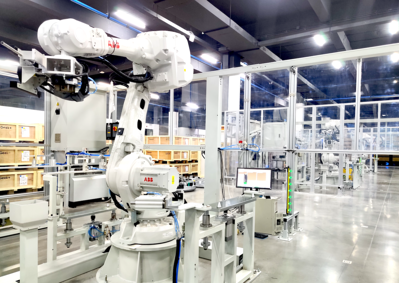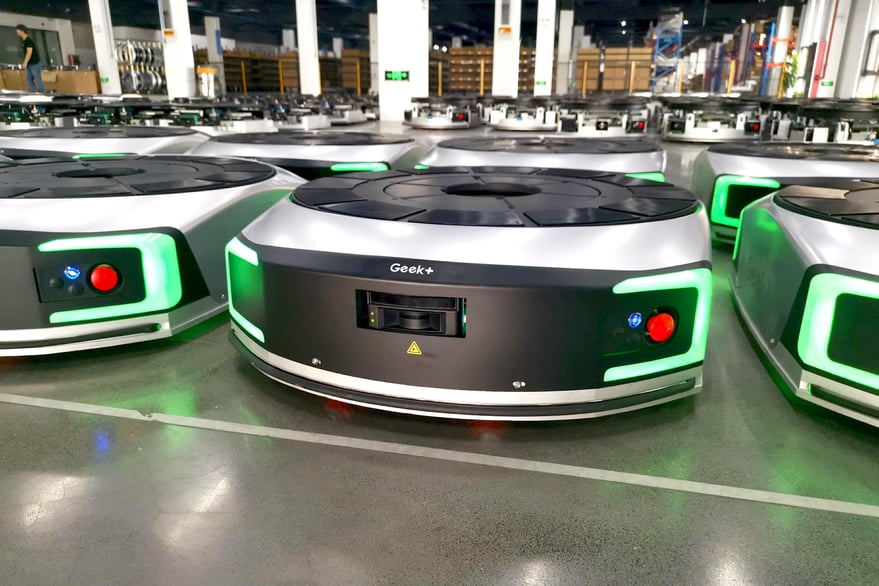Download our new white paper: Smart Factory: Material Handing in the Factory of the Future
The way manufacturers set up their production lines hasn’t fundamentally changed much in decades. For example, automakers use a linear assembly line where the bodies of cars are sometimes suspended above a linear production line and moved along slowly as robots or workers perform various tasks all the way along the line.

This method has been the main method of assembly for around a century, but autonomous mobile robots are now challenging this status quo.
Instead of using what could be described as an ground-based or overhead conveyor to move the cars along the assembly line, autonomous mobile robots could carry them along instead.
In fact, instead of a linear assembly line, autonomous mobile robots could be used to move the vehicle in a zig-zag or meandering pattern, perhaps from one work cell to another, delivering and collecting them as and when appropriate.
The beginnings of this kind of process are being explored by Geek+, in partnership with an automotive manufacturer the company works with. The company’s robots are being used to move car bodies along the production process without the aid of the overhead crane system or indeed any other machinery.
This kind of innovation would obviously do away with the linear production process altogether, and the order in which tasks are undertaken and completed could become more flexible, which has significant implications for the way factories are constructed and equipped.
Much like the way warehouses now have the option of foregoing fixed infrastructure and choosing autonomous mobile robots instead, automotive manufacturers, too, can think about reducing what can often be expensive investments in equipment that is almost permanently part of the building.
Not only that, autonomous mobile robots can be – and increasingly are being – used to move components and parts around a manufacturing facility. This is one of the benefits of warehouse robots that manufacturers are yet to fully realise.
However, the dynamics of manufacturing are increasingly fluid, or could be said to be in flux – at least in terms of the systems of being tested for future application across entire operations – so growth of such activity seems inevitable.

